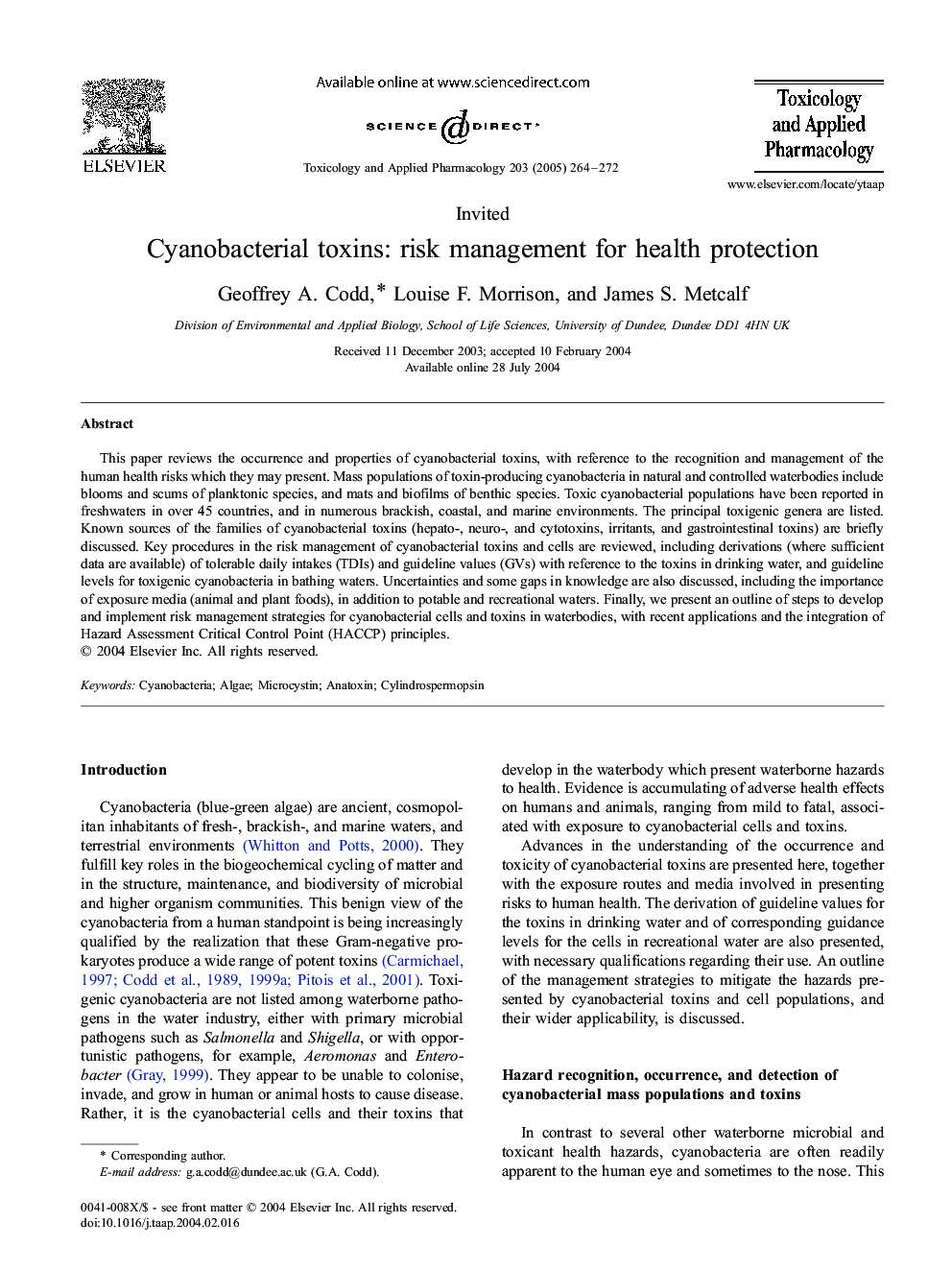| Article ID | Journal | Published Year | Pages | File Type |
|---|---|---|---|---|
| 9018404 | Toxicology and Applied Pharmacology | 2005 | 9 Pages |
Abstract
This paper reviews the occurrence and properties of cyanobacterial toxins, with reference to the recognition and management of the human health risks which they may present. Mass populations of toxin-producing cyanobacteria in natural and controlled waterbodies include blooms and scums of planktonic species, and mats and biofilms of benthic species. Toxic cyanobacterial populations have been reported in freshwaters in over 45 countries, and in numerous brackish, coastal, and marine environments. The principal toxigenic genera are listed. Known sources of the families of cyanobacterial toxins (hepato-, neuro-, and cytotoxins, irritants, and gastrointestinal toxins) are briefly discussed. Key procedures in the risk management of cyanobacterial toxins and cells are reviewed, including derivations (where sufficient data are available) of tolerable daily intakes (TDIs) and guideline values (GVs) with reference to the toxins in drinking water, and guideline levels for toxigenic cyanobacteria in bathing waters. Uncertainties and some gaps in knowledge are also discussed, including the importance of exposure media (animal and plant foods), in addition to potable and recreational waters. Finally, we present an outline of steps to develop and implement risk management strategies for cyanobacterial cells and toxins in waterbodies, with recent applications and the integration of Hazard Assessment Critical Control Point (HACCP) principles.
Related Topics
Life Sciences
Environmental Science
Health, Toxicology and Mutagenesis
Authors
Geoffrey A. Codd, Louise F. Morrison, James S. Metcalf,
